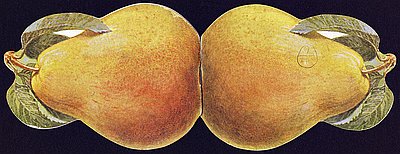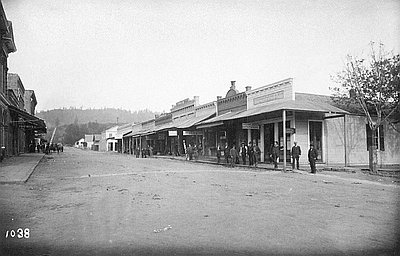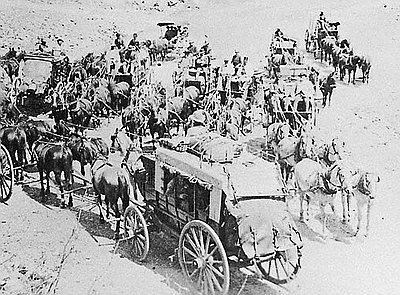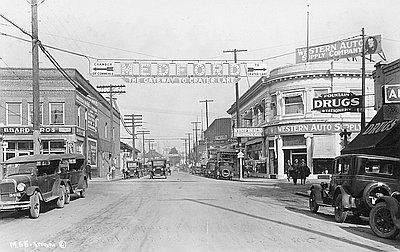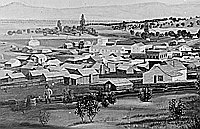Flood and fire have shaped southwest Oregon in both damaging and beneficial ways. Periodic flooding typically occurred when warm, heavy rains and snowpack combined in a massive melt and runoff. Although flooding was likely a regular occurrence, riparian vegetation was probably much more extensive than it is today. This plant cover would have trapped sediment and slowed floodwaters, thereby reducing peak flows.
Euro-American settlers aggravated flood conditions by logging riparian areas and compacting soils, sometimes with devastating results. In December 1852, for example, a heavy snowpack in the mountains melted under warm rains, causing a flood in the valleys below. The editor of the Ashland Tidings, traveling from Wagner Creek to Jacksonville, discovered splintered barns and fences and “found the ground scattered over with dead mice, gophers and squirrels which had been drowned.” Nine years later, widespread regional flooding destroyed houses and fields along the Rogue River. The Oregon Sentinel reported on December 21, 1861, that one farmer “lost his finely furnished house, ferry boat, outbuildings….dead cattle lie rotting in the hills.” Floods in 1890, 1927, 1955, and more recent years seriously damaged built improvements. At the same time that these floods swept barns and fences downriver, however, they also rejuvenated streams by resorting gravel bars and spawning beds and replenishing floodplain soils with nutrients.
Fire, both natural and human-caused, has long etched the mountains and valleys of southwest Oregon. Native peoples enhanced vegetation and game supplies through the use of fire, burning grasses seasonally to keep the valleys and hillsides open. Their low-intensity ground fires extended the range of forest species that depended on a frequent fire regime, stimulated the growth of native grasses, and kept oak savannas intact by burning back encroaching conifers. Indians also set fires to promote desirable basket-making materials and burned interior hardwood forests along ridgetops to create openings for hazel and beargrass. Members of the U.S. Exploring Expedition observed Indians burning vegetation in the upper Bear Creek Valley in September 1841. “We suddenly came to an Indian woman who was blowing a brand to set fire to the woods,” Midshipman Henry Eld wrote. “We stopped to speak to her…but she made no reply & we passed.”
© Kay Atwood and Dennis J. Gray, 2003. Updated and revised by OHP staff, 2014.
